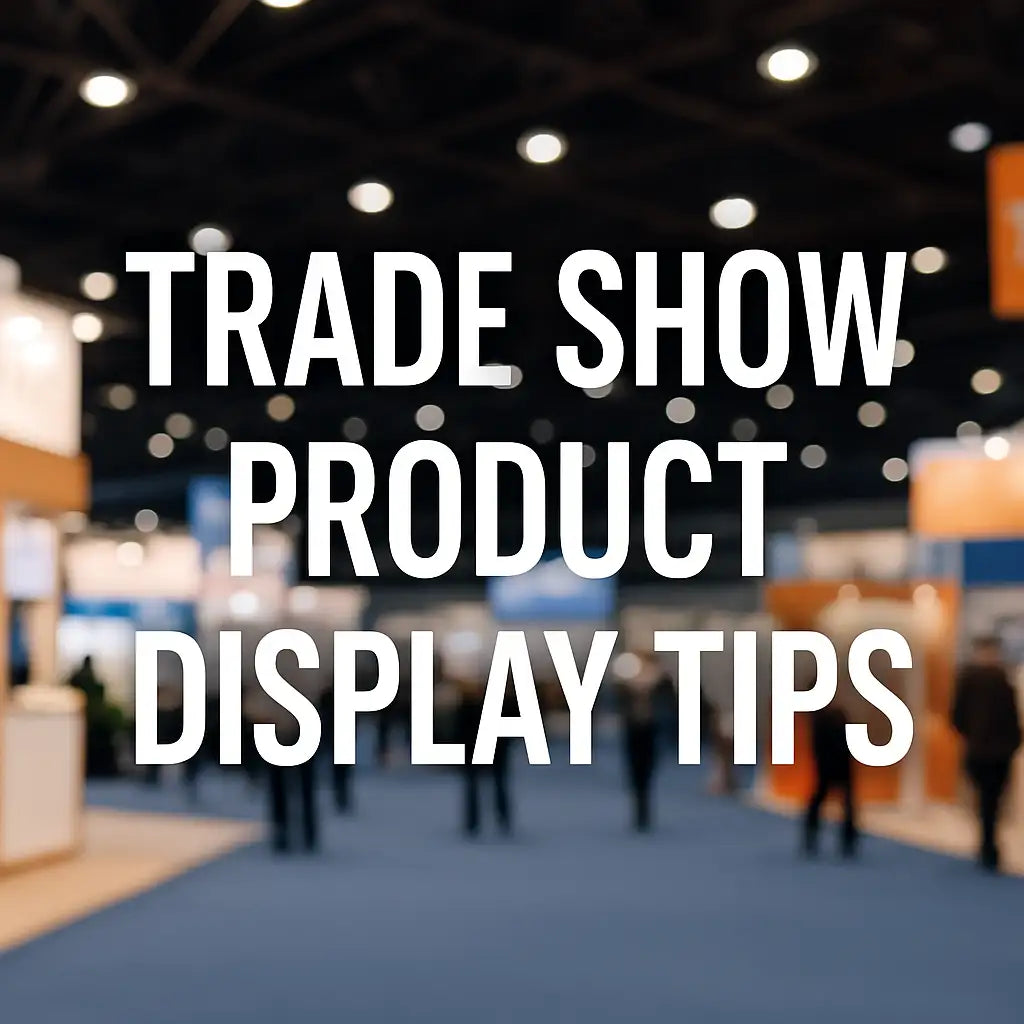
Trade Show Product Display Tips
In the bustling environment of a trade show, where countless brands compete for attention, how you display your products can make the difference between being overlooked and creating lasting connections with potential clients. A well-crafted product display does more than showcase items—it tells a story, highlights value, and invites interaction. Below is a comprehensive guide to designing impactful product displays that stand out and drive results.
1. Start with Audience-Centric Design: Know Who You’re Speaking To
Before arranging a single product, clarify your target audience. Are you targeting industry professionals, retailers, or end consumers? Their needs and interests will shape every aspect of your display:
• B2B buyers prioritize efficiency, durability, and cost-effectiveness. Highlight technical specifications, case studies, and bulk-order benefits.
• Retailers focus on marketability and profit margins. Emphasize packaging, shelf appeal, and consumer demand data.
• End consumers respond to emotion and usability. Showcase how products solve daily problems or enhance their lives.
Example: A company selling eco-friendly water bottles would tailor its display differently for retailers (featuring wholesale pricing and shelf-ready packaging) versus consumers (using interactive stations to test durability and sustainability features), all as part of effective trade display ideas.
2.Curate Your Product Selection: Less Is More
Trade show booths have limited space, and overcrowding with every SKU dilutes focus. Instead, curate a streamlined selection as part of your booth displays for trade shows:
• Flagship products: Highlight 1–3 star items that best represent your brand’s value.
• New releases: Generate buzz with launches, positioned prominently to draw curiosity.
• Complementary items: Group products that work together (e.g., a laptop with its matching sleeve and charger) to demonstrate versatility.
Tip: Use signage like “Our Bestseller” or “New for 2024” to guide attention to key items, a simple yet effective element in trade show booth display ideas.
3.Create Immersive Scenes: Contextualize Your Products
People buy solutions, not just products. Place items in realistic scenarios to help audiences visualize using them, which is a key part of creative trade show booth ideas:
• Lifestyle settings: A outdoor gear brand might set up a mini campsite with tents, sleeping bags, and portable stoves to evoke adventure.
• Problem-solution displays: A noise-canceling headphone brand could design a “before/after” zone—one side simulating a busy office, the other a quiet space where visitors test the headphones.
• Industry-specific environments: A medical equipment company might recreate a clinic exam room to show how its devices integrate into daily workflows.
Impact: Contextual displays reduce cognitive effort for viewers, making it easier to connect your product to their needs, and are a hallmark of best trade show displays.
4.Foster Interaction: Turn Passive Viewers into Active Participants
Engagement boosts memory retention. Design displays that invite touch, trial, or play, incorporating interactive booth ideas:
• Hands-on demos: Let visitors test products (e.g., a skincare brand offering samples, a tech company letting guests demo software).
• Interactive technology: Use touchscreens to share product videos, AR apps to “try on” items virtually, or QR codes linking to detailed tutorials, enhancing interactive booth activities.
• Games or challenges: A kitchen appliance brand could host a “speed chopping contest” using its new blender, turning product testing into entertainment, one of the engaging booth activity ideas.
Note: Ensure interactions are quick (30 seconds or less) to keep traffic flowing and avoid long lines, an important consideration in vendor booth setup ideas.
5.Use Visual Hierarchy to Guide Focus
Visual cues direct where viewers look first. Structure your display to highlight priorities, a key aspect of trade show display design ideas:
• Eye level is prime real estate: Place star products at 1.5–1.8 meters (5–6 feet) high, matching the average eye line.
• Color and contrast: Use your brand colors to create cohesion, but add pops of accent colors (e.g., a red sign against a neutral backdrop) to draw attention to key messages, a technique in trade show graphics.
• Lighting: Spotlight featured items with warm, focused lighting; avoid harsh glares that wash out details.
• Signage simplicity: Pair products with short, scannable text (e.g., “Saves 30% energy” instead of lengthy technical descriptions), a vital part of trade show banner designs.
6.Tell a Story: Connect Emotionally
Beyond features, audiences remember stories. Weave narrative into your display, which is central to trade show exhibit design:
• Brand mission: A sustainable fashion brand might display fabric swatches alongside photos of the artisans who make them, emphasizing ethical production.
• Customer success: Share short testimonials or case studies (e.g., “Helped Company X reduce costs by 20%”) to build credibility.
• Product journey: Show how your product evolves from concept to creation—sketches, prototypes, or behind-the-scenes videos add authenticity, enhancing the product display trade show experience.
7.Prepare for the Unexpected: Logistics and Backup Plans
Even the best displays falter without preparation, which is crucial for how to have a successful trade show booth:
• Secure fragile items: Use invisible mounts or protective cases to prevent damage from crowds.
• Test technology: Ensure demos, screens, and chargers work—bring backups for batteries, cables, or devices, a key part of trade show booth planning.
• Staff training: Teach your team to guide visitors through interactions, answer questions, and redirect traffic if bottlenecks form, ensuring your exhibitor booth runs smoothly.
Conclusion
A standout trade show display balances strategy and creativity, incorporating elements from unique small trade show booth ideas to grander designs. By focusing on your audience, curating products thoughtfully, and designing for interaction and storytelling, you’ll transform passive glances into meaningful connections. Remember: the goal isn’t just to show products—it’s to make people care about them. With these approaches, your booth will become a destination, not just a stop, and help you achieve how to make your trade show booth stand out.
